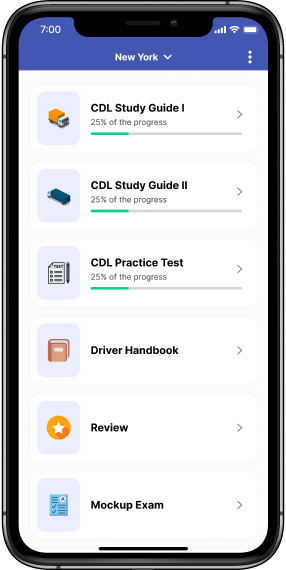Tips for Backing Up a Trailer Like a Pro Trucker

Collision in the back of a tractor-trailer unit is one of the biggest concerns for any truck driver during the manoeuvre. Backing up a trailer is very challenging and requires high-level skills not to cause damage to the vehicle, the loading dock, or the property. You can use simple tricks to ensure your backup is as quick and painless as possible.
How To Back Up A Tractor-trailer?
There are several steps for you to follow to successfully back or reverse the trailer.
Know Your Tractor-trailer First
- How long is a tractor-trailer? Combining the tractor and trailer, a standard semi-trucks length is about 70 feet long.
- How much does a tractor-trailer weigh? The empty tractor-trailer weighs approximately 30,000 pounds and around 80,000 pounds when fully loaded. Hence, even an empty tractor-trailer is heavier than a passenger vehicle or truck.
The bigger the vehicle is, the less sensitive it is to steer adjustments when backing up. You need empty space to make more exaggerated backing movements to back up a big tractor-trailer.
Check Your Vehicle
Do pre-trip inspections of the trailer’s hitch, chains, brake, and indicator lights.
Start Backing Up Your Truck
Step 1: Get into your vehicle, put your foot on the brake, start the car, and move the shifter into reverse.
Step 2: Line up as straight as possible, with the desired destination aligned with the vehicle's and trailer's outside edges. Be aware of obstacles and try not to fixate on them as you’re sure to do exactly what you didn’t want to do; hit them.Step 3: With a foot on the brake, slowly release to allow the idle to begin reversing the vehicle.Step 4: Use the side mirrors to maintain your view of the intended destination. (In some cases, the driver will need to look over his or her shoulder.)Step 5: Countersteer when necessary and reverse until the trailer is in the desired position. Step 6: Hit the brakes and shift the vehicle into the park. If this is the final position, turn the car off, and you’re set. If this is a drop-off, release the cargo and pull away.You did it. Congratulations!Tips For Backing Up a Trailer
You can use simple tricks to ensure your next backup is as quick and painless as possible.
Plan Ahead
It’s essential to plan your next backup in advance. This will help you avoid any potential issues during the process. For example, if you have rusty bolts or nuts, backing up a trailer will cause the rust to contaminate your truck's exhaust. This can hurt the performance of your engine. The best way to avoid this is to back up your trailer in the evening when the temperature is the lowest. This will prevent the exhaust from being contaminated with any harmful residue. At the same time, you will reduce the chances of the trailer brakes damaging the wheels on your truck. Next, check your location. Make sure no ramps or other objects obstruct your ability to back up. If there are, you’ll need to consider them while planning the backup.
Figure 01. Six steps to back up a trailer.
Avoid Waiting for Dawn or Dusk
Since the lighting conditions are much less stable at dawn and dusk, it’s less likely that a misaligned wheel will cause damage. This will also allow you to back up earlier, which is excellent if you have an early shift schedule. This is also a great time to back up your trailer. It’s less likely that you’ll encounter any other issues during the process.
Use Brakes To Start Your Backup
While using a brake to back up your trailer is common, it’s not necessary. A good rule of thumb is that the brake should only be used to back up your trailer when parked. This will help to avoid any damage caused to the wheels of your truck. At the same time, it will prevent you from damaging the tailgate of your trailer. There’s no need to resort to risking damage to these parts if you don’t have to. The brake, by itself, is not strong enough to start a truck’s engine. This is why it is only used to start the backup of your trailer. Once your trailer is parked, you can use your standard method of backing up your camper.
Always Fill Your Tires Before Backing Up
Before backing up your trailer, ensure the tires are completely filled. This will ensure that the truck’s wheels don’t get damaged. It will also prevent the engine from being damaged. You could risk damaging the machine if you don’t fill the tires. This is because the truck will be subjected to a greater degree of stress. At the same time, it will reduce the lifespan of the tires.
Turn on Your Foglight and Brakelight
To safely back up your trailer, turn on fog and brake lights to avoid collisions and improve visibility, especially at night or in low visibility and wet conditions. Keep equipment well-maintained to avoid issues, plan ahead, and use lights to prevent truck damage.
To back up your trailer quickly and safely, keep equipment well-maintained, plan ahead to avoid waiting for dawn or dusk, and use fog and brake lights to improve visibility and prevent damage to your truck.Learn more about the CDL exams and valuable tips to pass the tests and obtain your commercial driver's license in our CDL articles.Get ready for the CDL exams with our CDL Prep app, providing a variety of exam-like Questions and state-specific practice tests.





